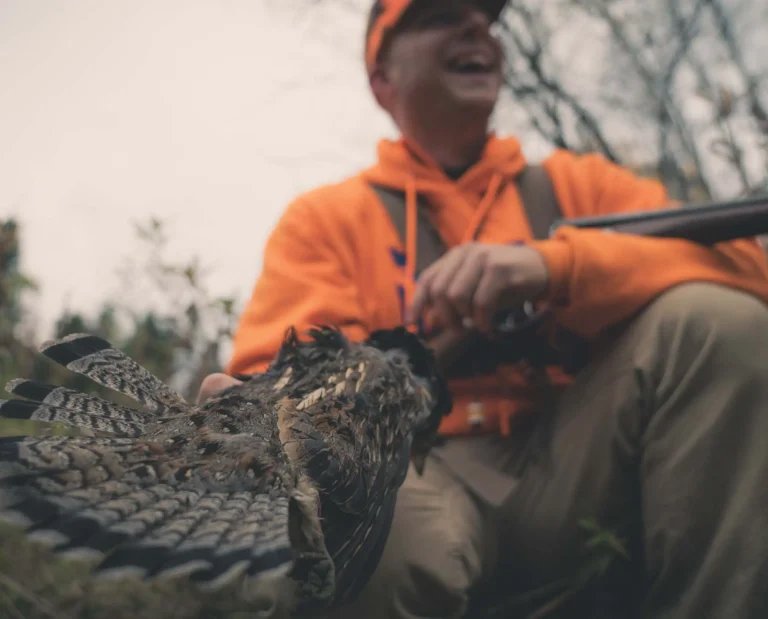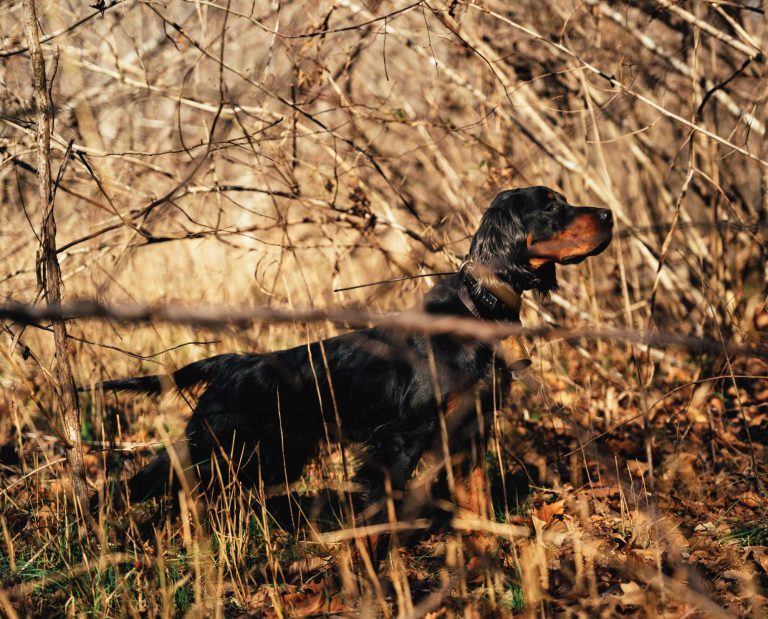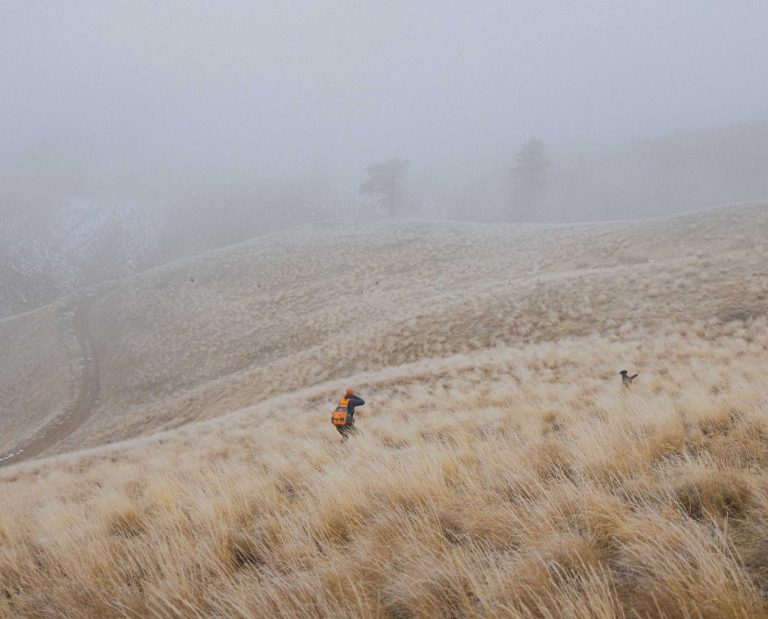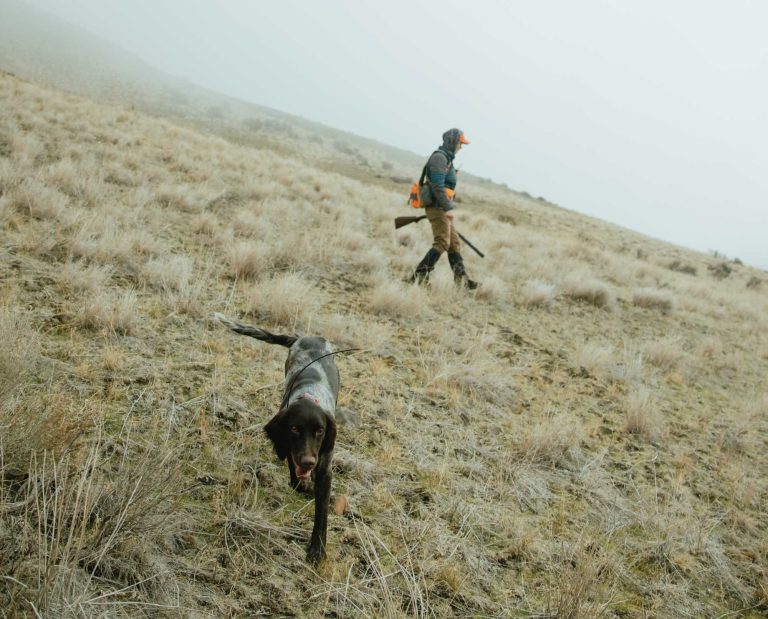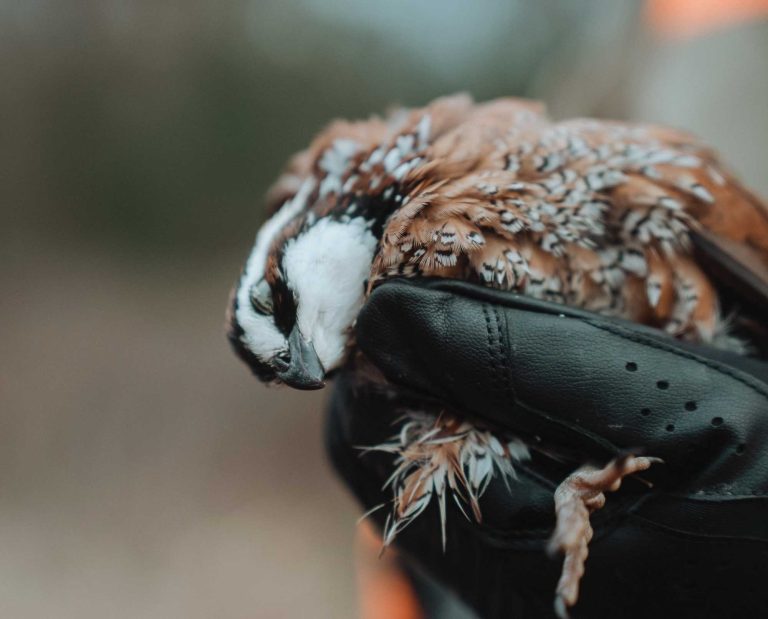4 Tips for Improving as an Upland Hunter
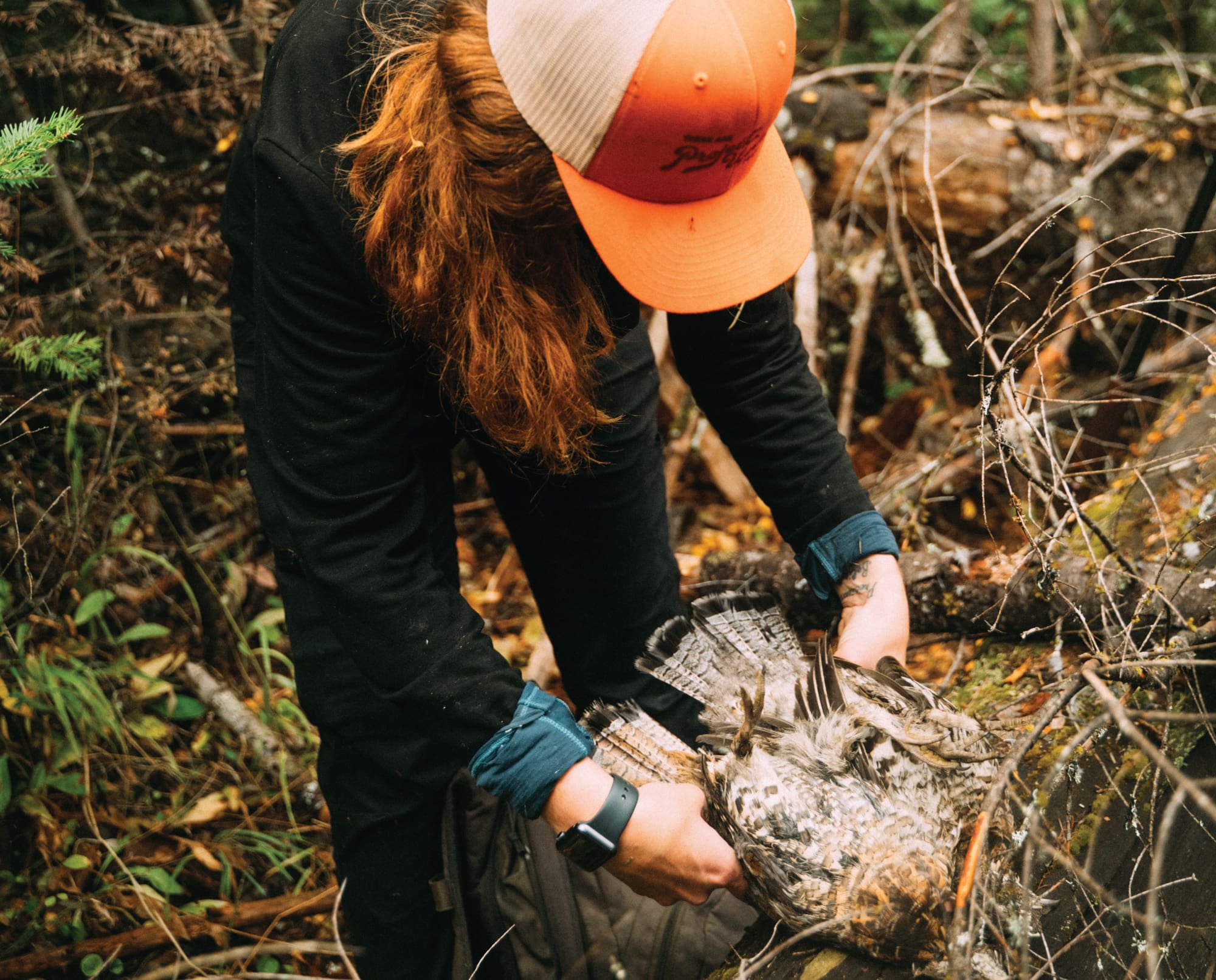
Become a better upland hunter by improving how you find and recover birds, maneuver in the field, and shoot your shotgun
I’m an adult-onset, first-generation hunter. Over the last five years, I’ve learned everything I can about upland bird hunting. This learning experience has been overwhelming. I looked at the obstacles I encountered as a set of parts to make becoming a hunter feel more attainable. With bird hunting, that challenge is all the greater since the parts are literally moving.
During a disheartened phase in my second hunting season, I wrote a list of the moving parts for upland hunting. It helped clarify what I was doing well while highlighting the specific areas I needed to work on. I could tell myself, “You were able to find birds. Woo! Now, you have to figure out how to shoot at them,” instead of being frustrated that I hadn’t taken a single shot all day.
Once I identified a problem, I would implement a solution. In time, my list of moving upland hunting parts has become succinct. I reflect upon it after every hunt. It has four parts: finding birds, maneuvering in the field, shooting, and bird recovery.
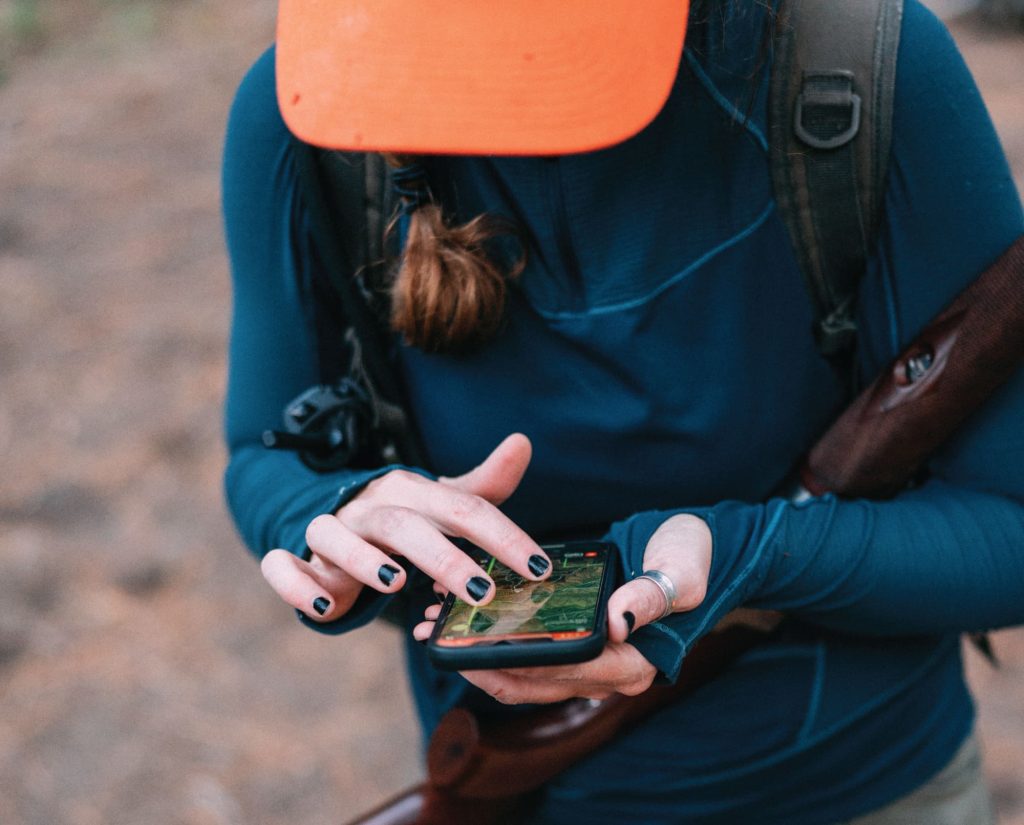
The Moving Parts: Finding Birds
Finding birds is the first and most time-consuming part of upland bird hunting, especially for novice hunters. It combines research from home and exploring different cover outdoors. When you understand the birds’ distribution and what they like to eat, the time spent looking equates to finding more “right” places. Similarly, more time spent in the field increases the chances of seeing or hearing a bird.
The best place to start your upland bird quest is by turning to media and talking to other experienced hunters. Gather as much information about your bird of choice as possible. Videos, articles, podcasts, forums, and books are excellent sources of information. Most folks aren’t terribly inclined to give away prized hunting locations, but I have yet to meet an upland hunter who doesn’t like to talk about birds. Consider calling your local state wildlife biologist, too. They are a wealth of knowledge and often keen on sharing.
Remember to ask specific questions to get clear answers. For example, “What do the counts for ruffed grouse in our county look like this year?” or “I have been looking at this particular public land on a map within known chukar distribution. Do you have any data about their numbers there this year?” Showing folks that you have done personal research goes a long way.
Compare your compiled data with topographic and public land access maps. OnX is a great resource. Once you’ve established a few places that may hold birds, explore them. If you can, spend time in the uplands before bird season. Forage for mushrooms or berries if you need an excuse to get into the woods. I have found excellent grouse spots because I heard a spring drummer as I looked for morels or had a blue grouse scare the life out of me as they flushed while I hiked in the heat of summer.
Finding birds is a “moving part” because bird populations and habitats are not static. Every year, you will have to adjust for a multitude of factors. Wet springs and scorching summers can be tough on birds. Habitat might change due to fires, landslides, and logging. Public hunting access is not always the same year after year, so hunters must check regulations annually. Locating birds in good cover one year doesn’t necessarily mean they will be there the next, or you can legally access the same spot at a future date.
Moving Parts: Maneuvering in the Field
Maneuvering in the field is how you and your dog (if you hunt with one) navigate bird cover separately and together. Bird dog training and physical fitness are the obvious go-to’s here, but they aren’t the only things to focus on.
Learning to move efficiently in tall, marshy grasses, traverse steep, rocky slopes, or twist through thorny, thick-timbered forests takes practice. When a dog is on point, time is of the essence. Knowing when and how to circle around natural obstacles instead of crashing through them requires special consideration and experience. Likewise, knowing when to hunch down and enter the thicket or when to scramble down precarious rocky terrain can mean making it to the flush in time. Confidence in your muscle memory, agility, and safety can make all the difference in getting to the dog faster. This only comes with time in the field practicing.
Having an understanding of the land you are hunting helps in these moments. If it is your first time at a new location, clumsily trudging along is often just part of getting to know the property. Each step becomes more solid with time, and your pace will naturally quicken.
The Moving Parts: Shooting
Shooting birds cleanly is arguably the most challenging aspect of upland hunting. If shouldering your shotgun and pulling the trigger in time isn’t hard enough, you must aim correctly with enough lead to have even one pellet connect with the bird. Shooting happens simultaneously while you identify the bird, verify safe shooting lanes, limit obstacles between you and the bird, and have the bird fall somewhere that is recoverable.
It’s a lot. And every single piece is essential.
No matter how many times I shoot clay pigeons, it never fully prepares me for a flushing bird and the variables that come with it. The practice is invaluable, but clay pigeon shooting occurs in safe and controlled spaces, and they descend at predictable rates. Unlike clays, upland birds spring up astonishingly fast and torpedo away in wild places. Too often, I have been caught slack-jawed, without even attempting to lift my shotgun, watching a dozen chukar glide down a vertical ravine or quail too numerous to count fly across a nearby river. It is humbling every time. I am obviously a sucker for the sight of them.
Once the shock of the flush wore off and I knew what to expect in the field, my trap practice started paying off. Shooting fundamentals are critical; you must get through the startle response to access them.
The Moving Parts: Bird Recovery
Bird recovery starts when you pull the trigger. Choosing whether to take the shot involves more than just hitting the bird; it requires ethics and skill. One must only take shots with the express intention of retrieving the bird.
Terrain can significantly change depending on your vantage point, which makes marking and tracking downed birds a skill. Watching where the bird falls and getting a good feel for that location before darting in is more complicated than I thought. Making an effort to mark exactly where I was standing when I fired and take in my surroundings before looking for a downed bird made a considerable difference. Being able to go back and restart the search, should I need to, is invaluable.
Sadly, the time will come when you lose a bird. Nothing is more upsetting than seeing a bird go down and being unable to find it. After nearly failing to retrieve my first chukar, I learned how to mitigate losing birds. I expanded my bird-finding repertoire to include avid dog retrieval training, marking where I shot and where I think the bird went down, looking for feathers, blood, tracks, or any other sign on the ground, and surveying the surrounding cover. Besides only taking clean shots, these things have helped immensely minimize the risk of failed retrievals.
Know Your Strengths and Weaknesses in Upland Hunting
I arranged these “parts” according to my strengths and weaknesses to continue my progress as an upland hunter. Listing them out allowed me to identify what I should work on next. The idea is continually molding and shaping a learning plan to improve your skills. Even the most successful upland hunters have room for improvement.
In order from greatest strength to greatest weakness, my list looks like this:
- Finding birds
- Bird recovery
- Maneuvering in the field
- Shooting
I enjoy researching, talking to people about, and spending time in the woods looking for birds. It’s no wonder I count finding birds as my greatest strength. Contrarily, I believe recovering birds is a strength of mine because it results from my greatest weakness: shooting. When I finally pull the trigger, I make clean, retrievable shots. As my shooting becomes more frequent, which is what I’m working on most, the risk of losing birds will be increasingly present. In preparation for this, I run blind search and retrieve drills with my pups regularly.
Learning how to maneuver in the field was a challenge for me. I grew up hiking on groomed trails, not trailblazing through unknown lands. I’ve been constantly surprised by the routes experienced lifelong hunters take to a dog on point. Where I have been known to struggle against snagging branches with every step clumsily, seasoned hunters bypass the challenging cover, finding game trails or old logging roads, and effortlessly beat me to the dog. As a result, I’ve learned a lot by watching others move. Today, the paths I choose to reach my dog are more methodical and concise.
My greatest upland hunting weakness is shooting. In the last five years, my marksmanship skills have profoundly improved. However, there is always room for more. I aspire to adhere to my practice shooting schedule more strictly, but my prominent weak spot is pulling the trigger in the field. If I shoot at a flush even once during a hunt, I count that as a success. As my hunting buddy says, “You miss 100 percent of the birds you don’t shoot at.”
All Upland Bird Hunters Have Things We Can Work On
Upland hunting is a process. Getting good at finding, accessing, shooting, and retrieving wild birds takes time and miles. In the most literal way, being an uplander is a moving target. Thankfully, through hard work and dedication, I have seen personal improvement in all four moving parts. However, everyone’s list of strengths and weaknesses looks different. I encourage every hunter to assess what they do well and what they can work on. We can all be better in the field. That’s what makes hunting so fulfilling: the challenge is never-ending, and the reward is delicious.



